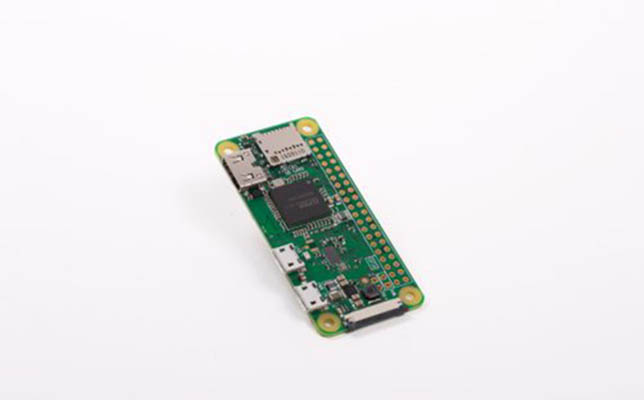Raspberry Pi Zero Goes Wireless, Adds Bluetooth

The new Raspberry Pi Zero W. Image Credit: Raspberry Pi Foundation.
Celebrating its fifth anniversary, the Raspberry Pi Foundation today introduced another version of its Raspberry Pi Zero microcomputer. The newest member of the family, Raspberry Pi Zero W, costs $10 and has Wi-Fi and Bluetooth capabilities.
It lacks Ethernet and full-sized USB-A ports like its flagship Raspberry Pi (which costs about $35 depending on the retailer), but it is smaller (roughly the size of a stick of gum) and a fraction of the cost. Both the Raspberry Pi Zero and Raspberry Pi Zero W have the same BCM2835 single-core chip that is in the original Pi, but the latter offers 802.11n wireless LAN and Bluetooth 4.0 capabilities.
The Raspberry Pi Zero W also features:
- 1GHz, Single-core CPU;
- 512MB RAM;
- Mini-HDMI and USB on-the-go ports;
- Micro USB power;
- HAT-compatible 40-pin header;
- Composite video and reset headers; and
- CSI camera connector.

Image Credit: Raspberry Pi Foundation.
Accompanying the product launch is a new injection-moulded case. It shares the same design as the case for the Raspberry Pi 3, but is about half the size and comes with three interchangeable lids.
Since the launch of its first Raspberry Pi, more than 12 million units have been sold worldwide, according to the Raspberry Pi Foundation blog. To see what this mini-computer has achieved over the last five years, watch the video below. Further information about the Raspberry Pi Zero W is available in the blog post announcement.
About the Author
Sri Ravipati is Web producer for THE Journal and Campus Technology. She can be reached at [email protected].